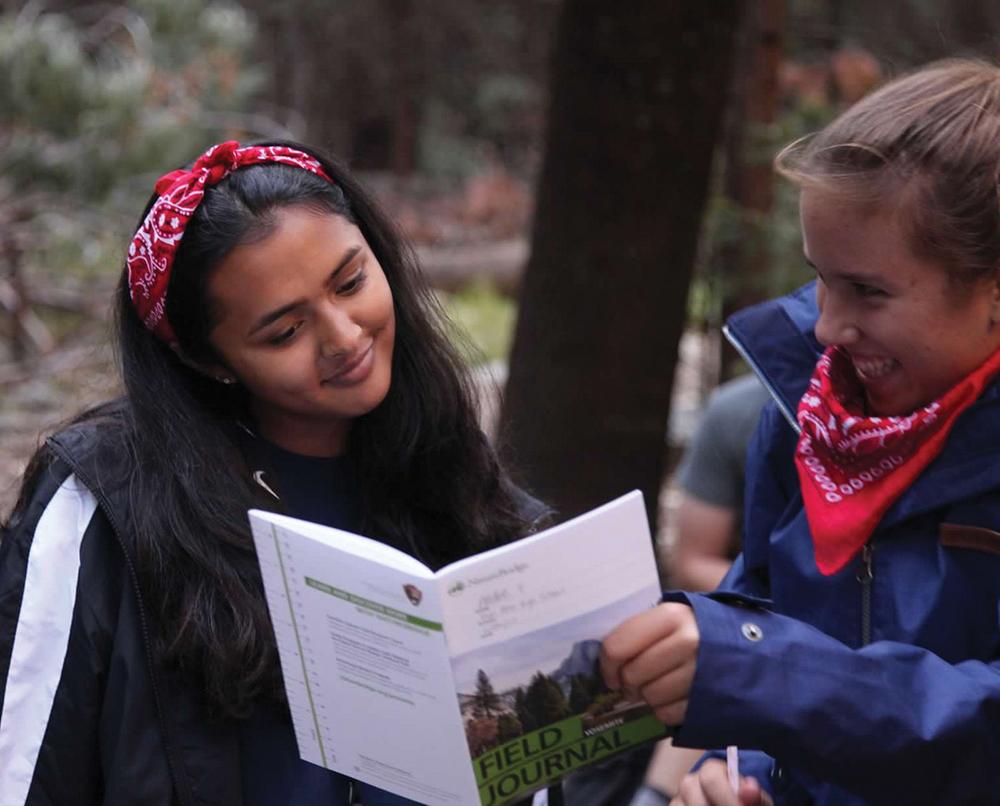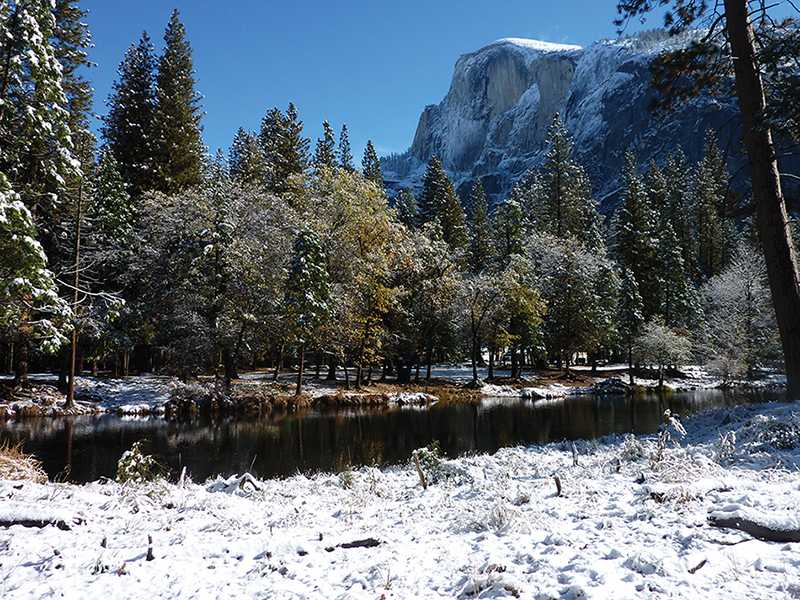From hiking misty waterfalls to exploring pitch black spider caves, NatureBridge, an organization that offers year-round environmental travel programs, aims to provide students with the opportunity to learn about the environment and experience nature at its best: in six national parks across the country. NatureBridge strives to educate students about environmental science and inspire connections to the natural world.
TEAM (Together Everyone Achieves More), a program for freshman at Palo Alto High School, plans an annual trip with the NatureBridge program based in Yosemite National Park.
“Their [NatureBridge’s] mission, in terms of what they’re trying to educate, is really well aligned with what we’re trying to do in our trip; not only building knowledge about the environment, but also team building and helping students develop [a] sense of empathy with nature,” says Elizabeth Brimhall, freshman biology and TEAM teacher at Paly.
Leave no trace
NatureBridge allows students to see what the organization aims to protect through hiking each day in different parts of Yosemite.
“I’ve never seen the real beauty of it [nature]; I’d never fully understood what we were protecting until then,” says Sophie Kadifa, freshman and TEAM student.
NatureBridge also aims to educate students on the negative effects of leaving waste behind on the trails.
“Whenever we ate we would … always put any crumb into a Ziploc bag,” Kadifa says. “You don’t want to do that [leave behind trash] because this is their [the animals’] home and we’re coming into it.”
Creating a community
Throughout the week, NatureBridge, educators work to build a community within the student group.
“They [NatureBridge educators] are specifically working on team building and activities that are both fun [and] work on interpersonal relationship skills,” Brimhall says.
NatureBridge educators helped create a community among the TEAM students.

“What brought us all together was how we could share this amazing experience together,” Kadifa says. “We were all learning together which I think is a big part of NatureBridge.”
For TEAM student and Paly freshman Andie Tetzlaff, NatureBridge educators created a memorable experience.
“My leader [educator] was Avi and he was such an amazing guide. … he really made our trip to Yosemite unforgettable,” Tetzlaff says.
According to Brimhall, allowing students to experience a week in nature can encourage student connections.
“Students have time to get deeper connections with each other … and with nature,” Brimhall says. “We’re trying to really build this sense of community [and] connection.”
NatureBridge also encourages connection with nature by providing students with journals to record their thoughts.
“[Journaling] was … a great opportunity to reflect on our day and express some emotions and feelings,” Tetzlaff says.
A classroom without walls
Learning by experiencing the outdoors can create a more engaging experience for students.
“You can teach about ecology using a textbook, but it so much better to … actually go out in the forest,” Brimhall says. “I do feel that you’re engaging so many more of your senses if you’re learning about a tree by actually seeing the tree, touching the tree, rather than just seeing a picture in a textbook.”
According to Kadifa, the hands-on approach that NatureBridge provides is an enriching learning experience by allowing students to see real examples of human impact on the environment.
“We always learn about things in science class, you learn when you do labs, but this was like you were actually living it,” Kadifa says.
For Kadifa, NatureBridge provided an eye-opening experience.
“I totally would recommend this program to other students,” Kadifa says. “It really … made me realize what we need to do to conserve this beautiful planet.”
According to Jon Jarvis, director of the National Park Service, as quoted on the NatureBridge website, national parks are the best classrooms.
“There is no place better for children to … study human impacts on our environment,” Jarvis states. “Together, science and inspiration create a desire to … preserve our national parks for future generations. That’s the key to what NatureBridge does [and] what makes this work so important.”



